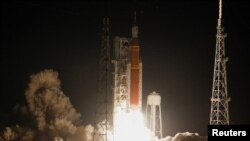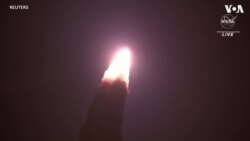The 32-story tall Space Launch System (SLS) blasted off from the Kennedy Space Center in Florida at 0647 GMT, producing a record 8.8 million pounds (39 meganewtons) of thrust.
Fixed to the rocket's top was the uncrewed Orion spaceship that will orbit Earth's nearest neighbor, in a test run for later flights that should see the first woman and first person of color touch down on lunar soil by the mid-2020s.
About two hours after launch, NASA said the spacecraft was on its trajectory to the Moon, and later released the first images taken of Earth receding behind the craft.
"Now we are going back to the Moon, not just for the sake of going to the Moon, but to learn how to live on the Moon in order to prepare to send humans all the way to Mars," NASA administrator Bill Nelson told a news conference after the launch.
"This is the next beginning, this is the Artemis generation," added Nelson, who said he watched the launch from the roof of the rocket assembly building along with a group of astronauts.
"What you have done today will inspire generations to come, thank you!" Charlie Blackwell-Thompson, NASA's first female launch director, told cheering teammates.
The launch on Wednesday was the third attempt for NASA after two previous ones were canceled for technical reasons. The launch was also delayed due to weather setbacks including Hurricane Ian, which battered Florida in late September.
America last sent astronauts to the Moon during the Apollo era, from 1969-1972.
This time it hopes to build a sustained presence -- including a lunar space station -- to help prepare for an eventual mission to Mars in the 2030s.






